Two days ago I spent time photographing nesting House Wrens in the high Uintas near Mirror Lake Highway, of interest to me is that two years ago I photographed Red-naped Sapsuckers using this same nesting cavity. The sapsuckers created the nesting cavity and other secondary cavity nesters like these wrens take advantage of their old nesting cavities.
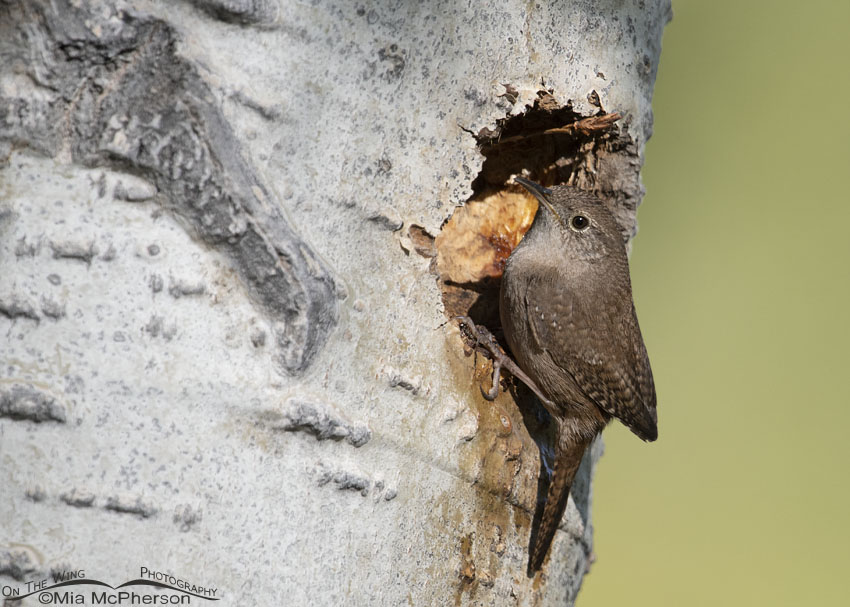 House Wren checking out its nesting cavity – Nikon D500, f7.1, 1/800, ISO 500, Nikkor 500mm VR with 1.4x TC, natural light
House Wren checking out its nesting cavity – Nikon D500, f7.1, 1/800, ISO 500, Nikkor 500mm VR with 1.4x TC, natural light
I know that this is the same nesting cavity the sapsuckers used because of the marking to the left of the wren on the aspen trunk, that marking looks like an anteater.
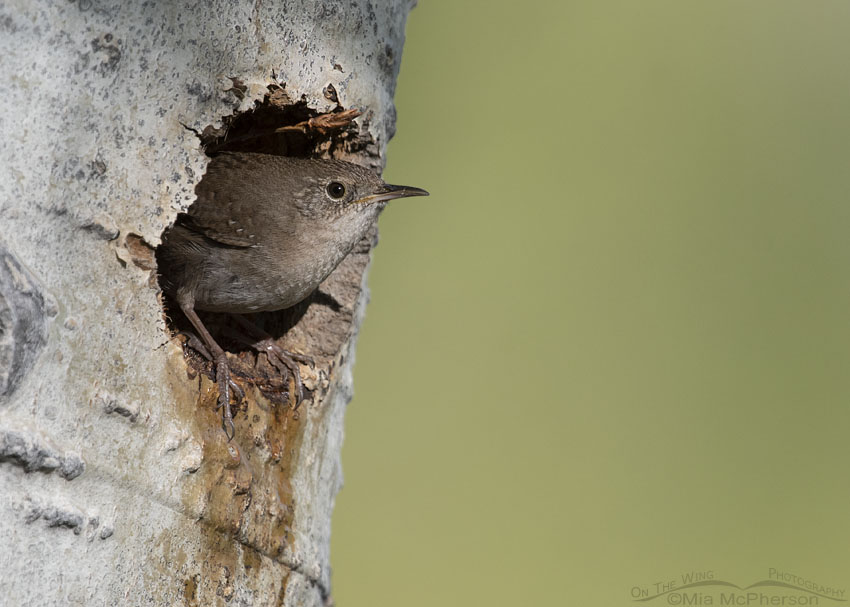 House Wren perched at the opening of its nest – Nikon D500, f7.1, 1/1000, ISO 500, Nikkor 500mm VR with 1.4x TC, natural light
House Wren perched at the opening of its nest – Nikon D500, f7.1, 1/1000, ISO 500, Nikkor 500mm VR with 1.4x TC, natural light
The light fell softly on the nesting tree and I was able to take several nice photos of the wrens at the opening. The wrens, I believe that there were two of them, flew in to the nest and away rather quickly at times, some of my images of them landing and taking off were nothing but blurs.
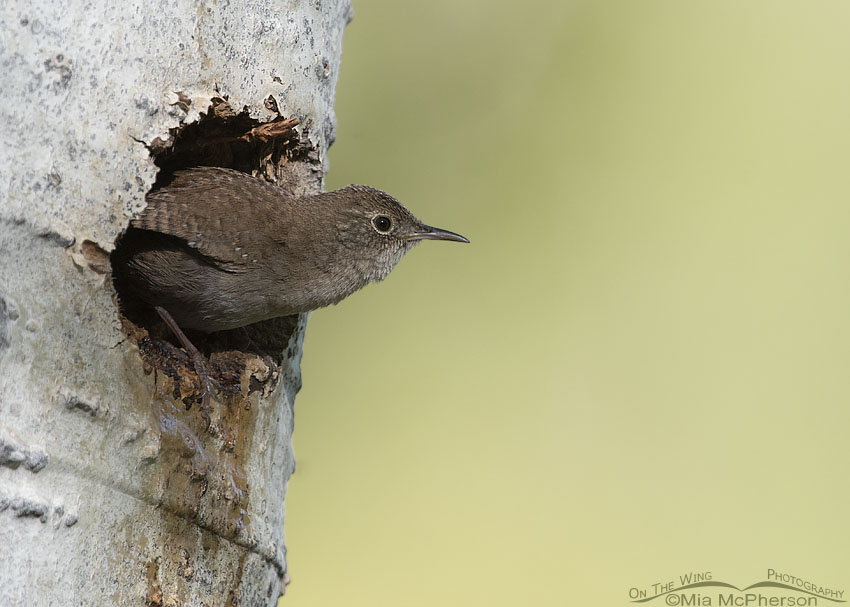 House Wren leaving its nesting cavity – Nikon D500, f7.1, 1/640, ISO 500, +0.3 EV, Nikkor 500mm VR with 1.4x TC, natural light
House Wren leaving its nesting cavity – Nikon D500, f7.1, 1/640, ISO 500, +0.3 EV, Nikkor 500mm VR with 1.4x TC, natural light
Clouds floating overhead did make taking flight photos a challenge because my shutter speed would drop significantly but I tried anyway. I’m happy with any photos I take of these small wrens especially when they are exhibiting nesting behaviors.
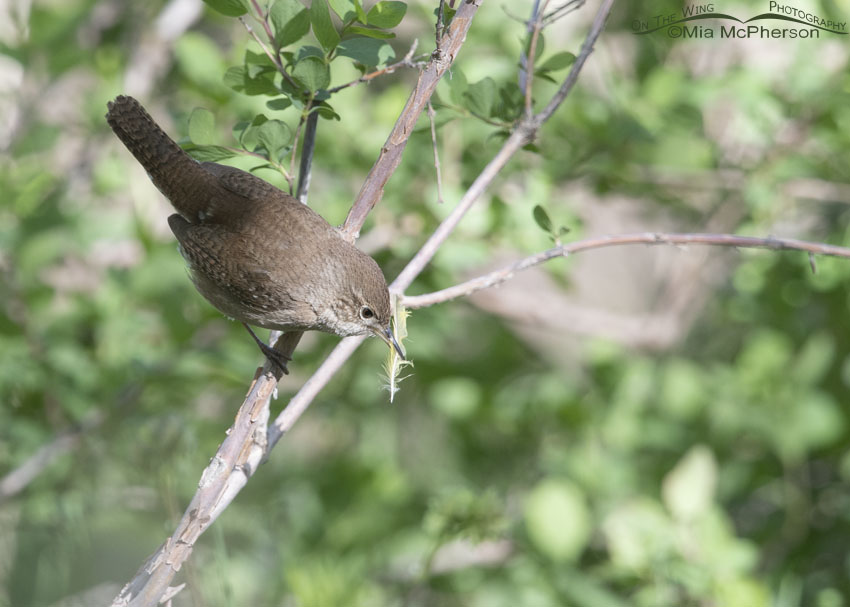 House Wren after picking up a feather for its nest – Nikon D500, f7.1, 1/320, ISO 500, +0.3 EV, Nikkor 500mm VR with 1.4x TC, natural light
House Wren after picking up a feather for its nest – Nikon D500, f7.1, 1/320, ISO 500, +0.3 EV, Nikkor 500mm VR with 1.4x TC, natural light
I spotted one of the wrens in some low shrubs after it picked up something from the ground and aimed my lens at it, I could see a tiny yellow feather in its bill and I expected that it would head towards the nesting cavity so I quickly pre-focused on the nest opening hoping to get a landing shot.
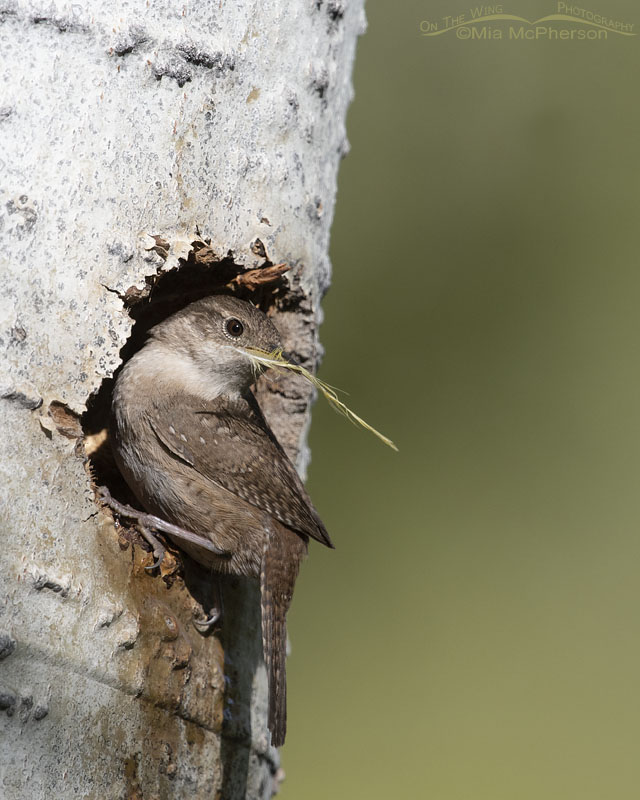 House Wren with a yellow feather at its nesting cavity – Nikon D500, f7.1, 1/1600, ISO 500, +0.3 EV, Nikkor 500mm VR with 1.4x TC, natural light
House Wren with a yellow feather at its nesting cavity – Nikon D500, f7.1, 1/1600, ISO 500, +0.3 EV, Nikkor 500mm VR with 1.4x TC, natural light
The landing shot I did take was a blur. Oh well. I loved the photos I took of the wren at the opening of it nest with the yellow flower in its bill anyway. The yellow feather may be from a Yellow Warbler, there certainly were plenty of them around but I can’t say that it is from a that species with certainty.
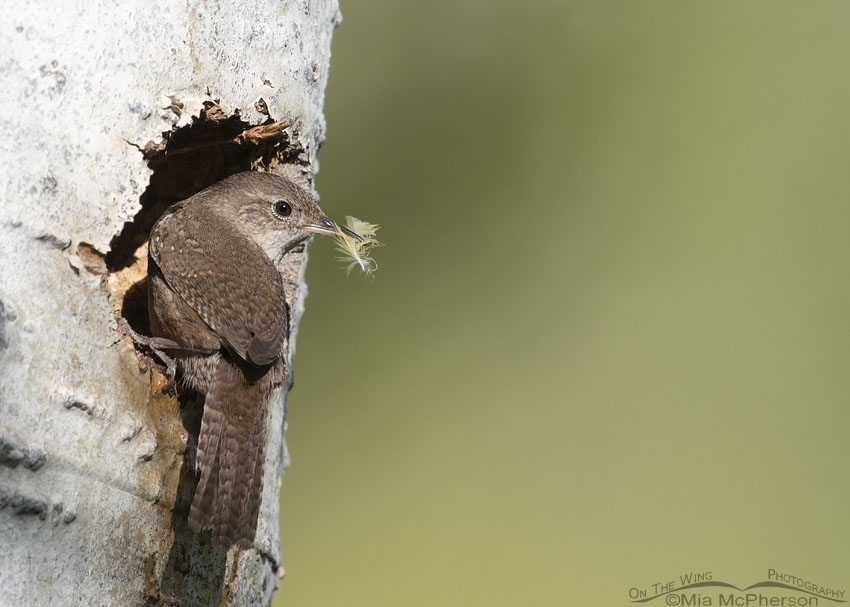 House Wren with a yellow feather at its nest – Nikon D500, f7.1, 1/1000, ISO 500, +0.3 EV, Nikkor 500mm VR with 1.4x TC, natural light
House Wren with a yellow feather at its nest – Nikon D500, f7.1, 1/1000, ISO 500, +0.3 EV, Nikkor 500mm VR with 1.4x TC, natural light
I believe the wren wanted to line its nest with the feather. Wouldn’t you know that a big truck lumbered by right about the time the wren was going to enter the nest and the noise made the wren fly off? That is just one of the frustrations of being a bird photographer, bad timing.
Still I was delighted to have found these nesting House Wren in the high Uintas.
Life is good.
Mia
Click here to see more of my House Wren photos plus facts and information about this species.


Love the contrasts and detail you captured against the muted background. Wonderful. Thanks Mia.
Oh so cute and busy! Miss our bird house you made year ago! No place for Wren for a long time! Love all your photos! love mom
Yet another species which recycles MUCH better than we do. And looks most excellent doing so.
I like this idea, no “flipping”, just recycling homes.
Beautiful images. I would like to make a few trips to the Uinta’s this summer after I come back from Australia. I stopped going because it became so crowded with people. My Australian friend has not explored the Uinta’s in the 20 years she has lived in Utah so after she treats me to her favorite haunts in her country I will have to show her more here in Utah.
Great photos. I agree, often just watching them (birds) is pleasure enough, photos that are good are just a bonus.
Beautiful. I haven’t seen House Wrens for years.
Just lovely!
.nice